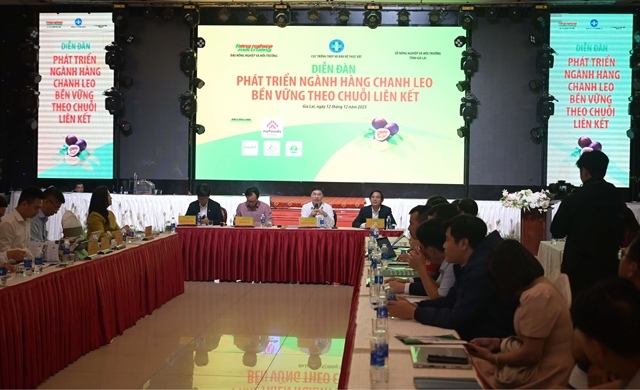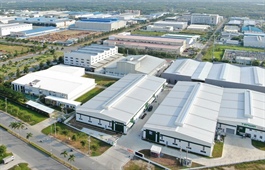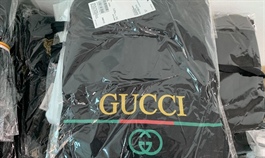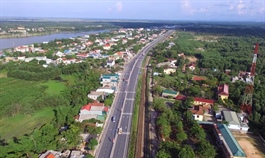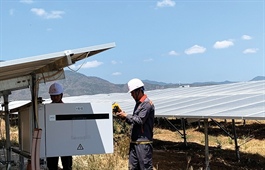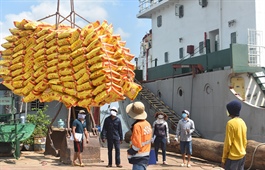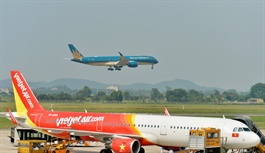Global prospects abound for textiles
Global prospects abound for textiles
Vietnam’s textile and garment industry is being transformed to adapt to new challenges by diversifying its export and input markets, thereby lessening the dependence on certain countries.
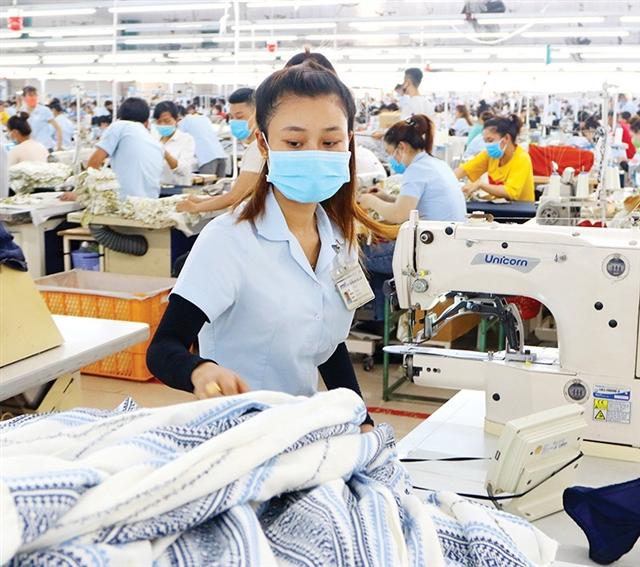
Addition of free trade agreements opens up potential for more countries to cooperate in textiles. Photo: Le Toan
|
This year, Vietnam’s textile and apparel industry stands ready to sell more than the previous year. The Vietnam Textile and Apparel Association (VITAS) forecasts that the industry will reach about $37-38 billion, up from $35.3 billion in 2020, but will continue to face difficulties due to the impacts of COVID-19.
Restructuring had been the major goal in the transition of Duc Giang Garment Corporation in 2020 in the midst of disrupted global supply chains and stagnating orders for the textile and garment industry during the first two quarters of the year. However, the company has put its faith into plans to develop four research and development centres, two online sales centres, and several sales and showrooms.
The company earlier this year emphasised the scale of its ambitions and announced it would step up trade promotion, focus on key customers, seek new ones, and strongly develop the domestic market, aiming to increase by 11 per cent to reach a revenue of VND2.3 trillion ($100 million) and pre-tax profit of VND35 billion ($1.5 million), up 40 per cent compared to 2020.
General director Vu Duc Giang said the corporation had “acceptable business results in 2020” as revenues reached VND2.1 trillion ($91 million), with exports making up $72 million of this and a profit of around VND25 billion ($1.08 million). However, Giang also noted that the complicated development of the pandemic “will remain a great challenge.”
Last year, Vietnam’s textile and garment industry’s gross output decreased by 22 per cent over the previous year. According to the Ministry of Industry and Trade, the export value of the industry has shown signs of recovery since June thanks to the increased demand from major export markets such as the United States and Europe.
In a report published in early March, VNDIRECT Securities Company found that only a few companies changed production lines in a timely manner, while most of them were heavily affected by the pandemic. VNDIRECT estimates that the total revenues of 2020 of listed textile and garment companies decreased by 15.1 per cent while net profits plummeted by 20.9 per cent over the previous year.
Nguyen Duc Hao, an analyst at VNDIRECT, said that some textile enterprises have converted a part of their production lines to medical masks and personal protective equipment, thereby partly compensating for the decline in sales.
Vietnam’s mask production capacity for exports is already very large, and Hao believed that after satisfying the domestic demand, products can be exported, with Vietnam having the potential to become the world’s new hub for the export of facemasks.
Positive forecasts are now covering the worldwide market. According to the Global Textile and Garment Market report, the total global demand is expected to increase from $594 billion in 2020 to $654 billion by the end of 2021, up 10.1 per cent. This growth comes mainly from rearranged production lines and a gradual recovery from the pandemic.
VNDIRECT expects the export turnover of Vietnam’s textile and garment industry in 2021 to recover according to the prospects of economic recovery in major export markets such as the US, the EU, Japan, and South Korea.
The securities company estimated that textile export value will increase 6.2 per cent on-year to $6.8 billion in the first quarter of 2021 due to strong pent-up demand in countries such as China, the US, and South Korea.
Many free trade agreements (FTAs) that Vietnam participates in is the driving force for its textile and apparel industry in the long term. However, fabric production is still a bottleneck for the industry as it must comply with the requirements of the FTAs on product origin.
For instance, the Comprehensive and Progressive Agreement for Trans-Pacific Partnership requires the application of the three-stage principle of spinning, weaving, and sewing to be implemented in CPTPP member countries.
Meanwhile, the EU-Vietnam FTA (EVFTA) imposes a technical requirement called “fabric onwards” and prohibits the use of fabrics originating from certain locations in China. Since Vietnam has to import most of the fabric from China, which accounts for 58 per cent of the total value of Vietnam’s fabric imports, it will cause certain difficulties.
VNDIRECT’s Hao realised that producers will need time to develop the proper production chain to meet the initial rules, but the EVFTA will have a positive impact on the textile industry in the long run.
The dependence on raw materials from China, Hao said, could be resolved by cooperating with other countries in the region. For example, an online trade conference between the Vietnam Trade Office in India and the Chamber of Commerce and Industry of Indian Importers was held in December.
According to the Apparel Export Promotion Council of India, the country’s businesses are considering investment into textile and garment with Vietnam to promote the development of the domestic industry.
Meanwhile, Vietnam has negotiated with EU countries on a provision allowing domestic businesses to add the origin of textile and garment materials imported from South Korea and other countries that have signed an FTA with the EU to their textile products.
“In addition, the Regional Comprehensive Economic Partnership (RCEP) could become a double-edged sword for fabric and yarn manufacturing,” Hao commented.
The RCEP, signed in November between six ASEAN member countries and five non-ASEAN countries, creates a market of 2.2 billion consumers. With it, Vietnam will enter a wider market with less stringent commitments than within the EVFTA and the CPTPP.
VNDIRECT thus still expects the RCEP to support textile businesses to reduce input costs as fabric export taxes from China are reduced from 10 to 2 per cent. It projected that the cost of goods sold in the garment segment will decrease by 5-5.5 per cent.






